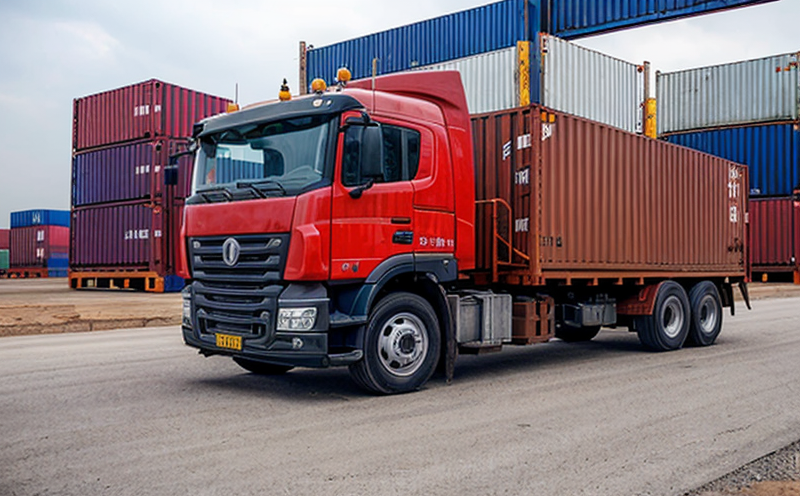Logistics safety compliance inspection
The logistics sector is a cornerstone of global commerce and supply chain efficiency. Ensuring that all components meet stringent safety and compliance standards is critical to maintaining the integrity of these operations. A comprehensive logistics safety compliance inspection ensures that every aspect of the transportation and handling processes meets legal, regulatory, and industry-specific requirements.
The primary objective of such an inspection is to safeguard personnel, protect assets, and comply with international standards like ISO 9001 for quality management systems or ISO 14001 for environmental management. The inspection process involves meticulous evaluation of the equipment, materials, and procedures used in logistics operations.
Key areas that are typically inspected include:
- Material handling equipment
- Pallets and containers
- Transport vehicles and trailers
- Storage facilities
- Handling protocols for hazardous materials
- Temperature-controlled environments (for perishable goods)
The inspection ensures that all these elements are in compliance with relevant regulations, which can vary by country or region. For instance, in the US, the Department of Transportation's Hazardous Materials Regulations (HMR) governs the transportation of dangerous goods.
By conducting regular inspections and audits, logistics companies can minimize risks associated with non-compliance, such as fines, reputational damage, and operational disruptions. The inspection process also helps identify potential areas for improvement in safety protocols and equipment maintenance.
The methodology employed during a logistics safety compliance inspection includes:
- Review of documentation: This involves verifying that all necessary paperwork is up-to-date and compliant with regulatory requirements.
- Equipment testing: Specific machinery and vehicles are put through rigorous performance tests to ensure they meet the required standards.
- Environmental checks: Ensuring that storage areas, especially those for temperature-sensitive products, adhere to specified conditions.
In summary, a logistics safety compliance inspection is essential for maintaining high standards of operational efficiency and safety. It provides peace of mind to all stakeholders involved in the supply chain by ensuring adherence to international best practices and regulatory frameworks.
Why it matters
The importance of logistics safety compliance inspection cannot be overstated, particularly given the increasing complexity and global reach of modern logistics operations. Compliance with international standards not only ensures operational efficiency but also protects personnel from potential hazards.
For example, improper handling or storage of hazardous materials can lead to significant risks for workers and nearby communities. By adhering to strict inspection protocols, logistics companies can prevent such incidents and ensure the safe movement of goods across borders.
The impact of non-compliance can be severe, leading to:
- Legal penalties
- Fines from regulatory bodies
- Risk management issues due to operational disruptions
- Reputational damage affecting customer trust and relationships
The global nature of logistics means that companies must comply with a multitude of regulations, both nationally and internationally. This underscores the necessity for robust inspection processes that are not only thorough but also adaptable to changing standards.
In conclusion, the implementation of a logistics safety compliance inspection is vital for safeguarding personnel, protecting assets, and maintaining a competitive edge in an increasingly interconnected world.
Industry Applications
The logistics sector encompasses a wide range of industries, from manufacturing to retail. The logistics safety compliance inspection is applicable across these sectors and ensures that all operations adhere to strict standards.
- Manufacturing: Ensures the safe handling and transportation of raw materials and finished products.
- Retail: Guarantees the secure transport of perishable goods, ensuring they reach consumers in optimal condition.
- Aerospace: Provides stringent checks on equipment used for transporting sensitive components.
- Pharmaceuticals: Ensures that temperature-sensitive medications are transported and stored within specified parameters.
The inspection process is particularly critical in industries dealing with hazardous materials, such as chemicals or radioactive substances. In these cases, the safety of workers and the environment takes precedence over all other considerations.
In addition to these specific applications, the logistics sector often works closely with government agencies and international bodies like the World Health Organization (WHO) to ensure that global supply chains function smoothly while adhering to high standards.
Use Cases and Application Examples
| Industry Sector | Description of Use Case | Compliance Standards | Testing Equipment Used |
|---|---|---|---|
| Agriculture | Inspection of refrigerated trailers used for transporting perishable goods. | ISO 6892:2016 (Mechanical testing of steel) | Infrared thermometers, humidity sensors |
| Hazardous Materials | Testing of packaging and labeling for hazardous materials. | DOT 49 CFR Parts 172-180 (HMR) | Durability testers, seal integrity analyzers |
| Retail Distribution Centers | Evaluation of conveyor systems and storage racks. | ISO 9001:2015 (Quality Management) | Loading/unloading machines, load testers |
- Aerospace Logistics: Inspection of aircraft parts and components before transport to ensure they meet airworthiness standards.
- Pharmaceutical Distribution: Verification of cold chain compliance for temperature-sensitive medications.
- Retail Supply Chains: Audits of warehouse facilities focusing on storage conditions and handling protocols.
These use cases highlight the diverse applications of logistics safety compliance inspections across various industries. Each sector has unique requirements that must be addressed to ensure safe and compliant operations.





